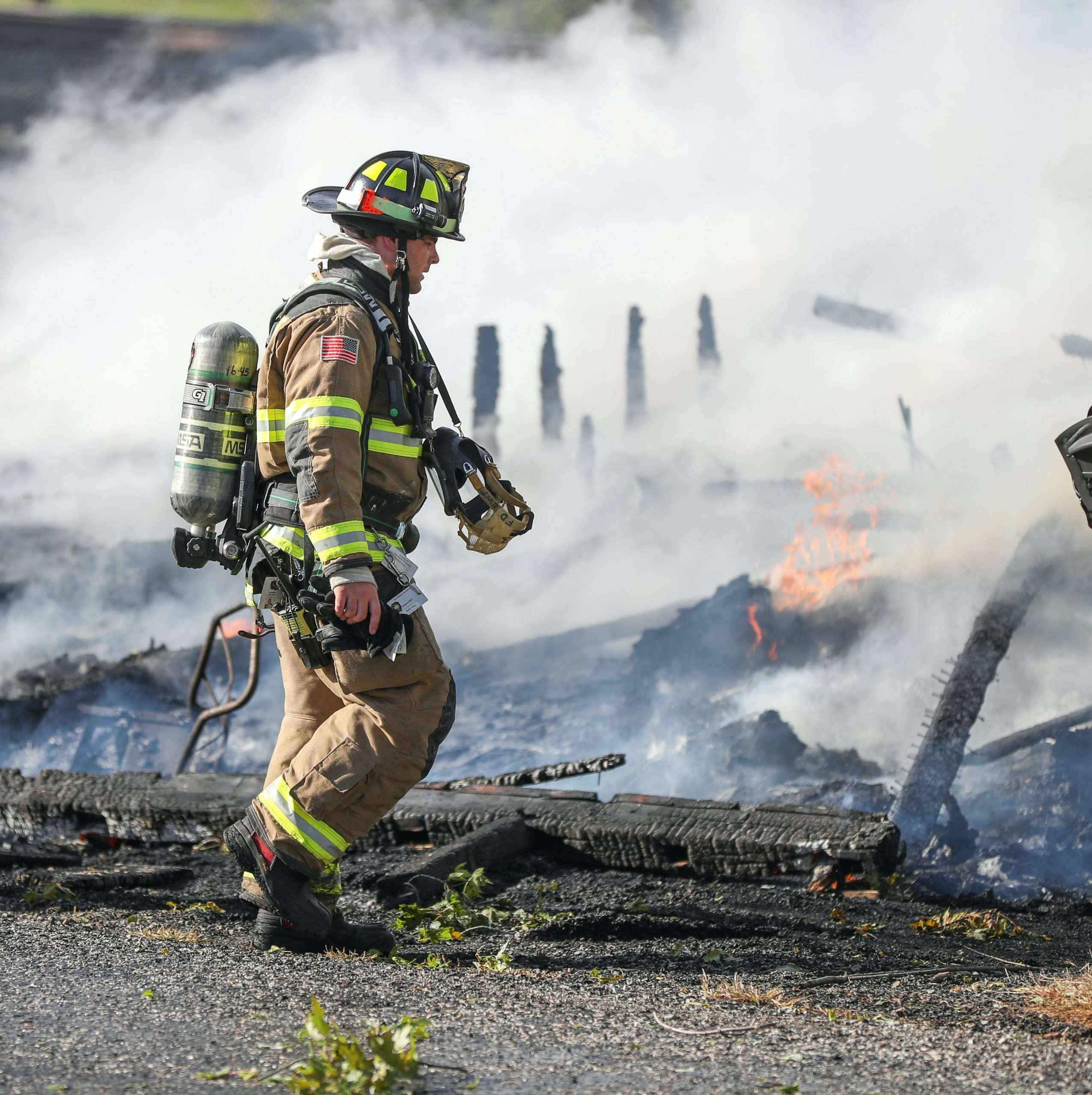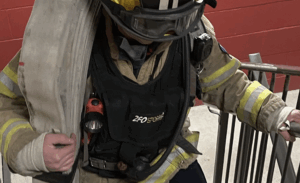Volunteer firefighters serve as the unspoken heroes within our communities, providing a vital shield against the devastating effects of fire emergencies. Their unwavering commitment and selfless dedication make an indelible mark, safeguarding lives, homes, and neighborhoods. These brave individuals stand as pillars of strength, responding to calls for help with unparalleled courage and resilience, illustrating their indispensable role in ensuring community safety.
Amidst their challenges and dangers, the realm of volunteer firefighting epitomizes the essence of noble service and altruism. It’s a calling that transcends mere duty; it’s a testament to the intrinsic desire to protect and serve. Volunteer firefighters embody the spirit of selflessness, willingly putting themselves in harm’s way to preserve lives and property. Their sacrifices and contributions ripple through society, leaving an enduring impact that echoes far beyond the boundaries of emergency response.
Table of Contents
Understanding the Role of a Volunteer Firefighter
The responsibilities and duties of a volunteer firefighter encompass a wide range of crucial tasks and roles within a firefighting team:
- Emergency Response: Volunteer firefighters are on call to respond to various emergencies, including fires, accidents, medical incidents, and natural disasters. They swiftly and efficiently attend to emergency calls, offering immediate aid and assistance to those in need.
- Fire Suppression: One of the primary duties involves extinguishing fires. Volunteer firefighters employ various firefighting techniques and equipment to control and eliminate fires, safeguarding lives and property.
- Rescue Operations: Beyond firefighting, volunteers are often involved in rescue operations. They assist in rescuing individuals trapped in hazardous situations, such as vehicle accidents, building collapses, or confined spaces.
- Medical Assistance: Many volunteer firefighters are trained as emergency medical technicians (EMTs) or paramedics. They provide initial medical care, perform CPR, and offer first aid to victims until specialized medical personnel arrive.
- Training and Drills: Continual training and participation in drills are vital for volunteer firefighters. They engage in regular training sessions to hone their firefighting skills, improve response times, and stay updated on the latest safety protocols and equipment use.
- Community Outreach and Education: Volunteers often engage in educational initiatives within the community. They conduct fire prevention programs, offer safety tips, and participate in community events to promote fire safety awareness.
- Equipment Maintenance: Maintaining and inspecting firefighting equipment and apparatus is another critical responsibility. Volunteer firefighters ensure that all tools and gear are in top condition and ready for immediate use when needed.
- Team Collaboration: Working closely within a team environment is crucial. Volunteer firefighters collaborate seamlessly, relying on effective communication and coordination to ensure efficient emergency response operations.
These responsibilities collectively showcase the dedication, readiness, and diverse skill set required of volunteer firefighters, highlighting their pivotal role in ensuring community safety and well-being.
The commitment, dedication, and personal sacrifices required of a Volunteer Firefighter
The role of a volunteer firefighter demands an extraordinary level of commitment, unwavering dedication, and substantial personal sacrifices:
- Time Commitment: Volunteer firefighters dedicate significant time to their role. They must be prepared to respond to emergencies at any hour of the day or night, often sacrificing personal plans and family time to serve their communities.
- Training and Education: Achieving proficiency in firefighting requires continuous training and education. Volunteers invest time in ongoing training sessions, certifications, and drills to enhance their skills and stay updated with the latest techniques and safety protocols.
- Physical and Mental Demands: The job demands peak physical fitness and mental resilience. Firefighters must maintain excellent physical health to perform strenuous tasks during emergencies while managing the mental stress of high-pressure situations.
- Risk and Safety: Firefighting inherently involves risk. Volunteer firefighters willingly put themselves in perilous situations to save others, often facing life-threatening hazards, intense heat, smoke, and collapsing structures.
- Personal Sacrifices: Serving as a volunteer firefighter requires sacrifices on various fronts. From foregoing leisure activities to responding to emergencies during holidays and family events, volunteers consistently prioritize community safety over personal pursuits.
- Emotional Toll: Witnessing traumatic incidents and dealing with the aftermath of emergencies can take an emotional toll. Volunteer firefighters must manage stress, trauma, and emotional strain while maintaining a composed and effective response during crises.
- Community Contribution: Despite the challenges, volunteer firefighters derive deep satisfaction from contributing to the welfare of their communities. Their sacrifices and dedication ensure their neighbors’ and environment’s safety and protection.
The commitment, dedication, and personal sacrifices demanded of volunteer firefighters are profound. It’s a calling that requires unparalleled selflessness, resilience, and a deep-rooted commitment to serving and safeguarding others, often at significant personal cost.
Qualities and Skills Needed to be a Successful Volunteer Firefighter
Becoming a volunteer firefighter isn’t just about donning protective gear and fighting fires. It requires a unique set of skills and qualities beyond the physical aspect. From leadership and teamwork to adaptability and quick decision-making, these traits are the cornerstone of a successful volunteer firefighter’s arsenal.
Essential Traits and Skills for a Volunteer Firefighter
- Physical Fitness and Endurance: Firefighting demands peak physical condition. Volunteers must possess endurance, strength, and agility to handle the physically demanding aspects of the job, from carrying heavy equipment to navigating challenging terrains.
- Teamwork and Collaboration: In the firefighting realm, teamwork isn’t just beneficial – it’s crucial. The ability to seamlessly collaborate with a diverse team, communicate effectively, and rely on each other’s strengths is vital in high-stress situations.
- Leadership and Initiative: A volunteer firefighter must display leadership qualities, taking charge when necessary, making sound decisions, and guiding others during emergencies, demonstrating confidence and competence.
- Problem-Solving Skills: The ability to analyze situations, assess risks, and devise effective solutions on the spot is imperative. Firefighters often encounter complex scenarios that require quick, critical thinking to address effectively.
- Adaptability and Resilience: Emergency situations are unpredictable. The capability to adapt to changing circumstances, remain composed under pressure, and bounce back from challenges is essential.
- Quick Decision-Making: When lives are at stake, split-second decisions matter. Volunteer firefighters must possess the ability to make rapid yet accurate decisions, weighing risks and benefits swiftly.
Significance of Adaptability, Resilience, and Quick Decision-Making in Emergencies:
- Adaptability: Emergency scenarios are fluid, requiring firefighters to adjust rapidly to evolving conditions, such as changing weather patterns or unforeseen obstacles, to ensure the safety of themselves and others.
- Resilience: The demanding nature of firefighting exposes individuals to physically and emotionally taxing situations. Building resilience helps firefighters cope with stress, trauma, and job demands.
- Quick Decision-Making: In crisis moments, time is precious. The capacity to make rapid yet informed decisions, considering all variables, can significantly impact the outcome of an emergency situation.
Being a volunteer firefighter is a noble and demanding role requiring a diverse skill set and a unique blend of personal qualities. Mastering these traits prepares individuals for the challenges of firefighting and enables them to serve their communities effectively in times of need.
Educational and Training for Aspiring Volunteer Firefighters
Becoming a volunteer firefighter is a noble and rewarding endeavor that requires dedication, commitment, and specialized skills. One of the essential aspects of preparing for this role is acquiring the necessary education and undergoing specific training programs. In this guide, we’ll explore the educational prerequisites and training pathways essential for those aspiring to serve as volunteer firefighters.
Educational Requirements:
- High School Diploma or Equivalent: Most volunteer fire departments require candidates to have a high school diploma or GED equivalent as a baseline educational qualification.
- Additional Certifications: Additional certifications, such as Emergency Medical Technician (EMT) or Paramedic training, can significantly enhance an individual’s credentials. EMT training is highly valued as it equips firefighters with essential medical skills crucial in emergency situations—many volunteer fire departments aid in acquiring these certifications. Check with your local department today.
Training Pathways
- Firefighter Training Academies: Many regions offer firefighter training academies or programs explicitly designed for volunteer firefighters. These academies cover various aspects of firefighting, including firefighting techniques, equipment usage, rescue operations, hazardous material handling, and fire behavior.
- State-Sponsored Training Courses: Some states provide state-sponsored training courses or academies tailored for volunteer firefighters. These programs often align with national standards and offer comprehensive training modules.
- On-the-Job Training: Hands-on experience is invaluable. Volunteer firefighters receive practical training by participating in drills, simulations, and live-fire exercises under the guidance of experienced professionals.
- Continuing Education: Firefighting is an evolving field. Volunteers should engage in ongoing education and training programs to stay updated on the latest firefighting practices, technological advancements, and safety protocols.
Volunteer Firefighter Certifications
- Firefighter I and II Certifications: These certifications cover fundamental firefighting skills, fire behavior, rescue techniques, and equipment operation. Firefighter II is a more advanced level, focusing on leadership and command skills.
- Emergency Medical Services (EMS) Certifications: Many volunteer firefighters pursue EMS certifications such as EMT-Basic or EMT-Paramedic to provide medical assistance during emergencies.
Becoming a volunteer firefighter requires a combination of formal education, specialized training, and continuous learning. It’s crucial for aspiring firefighters to acquire the necessary qualifications and certifications to perform their duties effectively and contribute meaningfully to their communities.
By fulfilling educational prerequisites and undergoing comprehensive training, individuals can prepare themselves to serve as dedicated and skilled volunteer firefighters, making a significant difference in safeguarding lives and properties within their communities.
Finding Volunteer Firefighter Opportunities
Becoming a volunteer firefighter isn’t just a commitment; it’s an opportunity to serve your community and make a difference. Locating these opportunities might initially seem daunting, but various avenues exist, from local fire departments to online resources and community centers.
Local Fire Departments: Local fire departments are the primary source of volunteering opportunities. Visit your nearby fire station or check their website for information on recruitment, applications, and any upcoming training sessions. Many departments keep applications on file for future openings, even if they aren’t actively recruiting. Check out my blog: 3 simple steps to find a department near you.
Online Resources: Several online platforms specialize in listing volunteer opportunities. Websites like VolunteerMatch, Idealist, and local government websites often feature volunteer firefighter roles. These platforms allow you to filter searches by location, making finding opportunities in your area easier.
Community Centers and Events: Community centers, town halls, or local events often host information sessions or recruitment drives for volunteer firefighters. Attending these gatherings provides information and allows you to interact with current firefighters and understand their experiences firsthand.
Networking and Personal Connections: Utilize personal connections or networks within the firefighting community. Reach out to family, friends, or acquaintances involved in firefighting or related fields. They may have insights, contacts, or insider information about volunteer opportunities.
Tips for Navigating the Application Process
While the application process may vary, specific tips can help streamline your pursuit. The initial step in joining your local fire department is filling out their official job application. This application process usually involves multiple steps and may vary depending on the specific procedures of the fire department.
Locating the Application
Since volunteer fire stations aren’t typically manned around the clock, visiting the station’s door might not yield results. Instead, check the city or township’s website or call the station during business hours. If this doesn’t pan out, head to Google, type in your address, and pinpoint the nearest fire station using the map feature. Reach out via email to the hiring authority listed for further guidance.
Outlined Process
- Research and Preparation: Investigate the fire department’s website to ascertain if they are hiring and grasp the application process. Even if no openings are available, submitting your application for future consideration is advisable. Review job postings to understand qualifications and responsibilities, which often don’t demand prior training for volunteer or on-call roles.
- Acquiring the Application: Many fire departments offer downloadable applications on their websites or provide physical copies at their station or administrative offices.
- Completing the Application: Thoroughly read and adhere to the application instructions, ensuring precise and comprehensive responses. Furnish detailed personal information, work history, education, certifications, and any additional details requested. When in doubt, contact the fire department for clarification.
- Assembling Required Documents: Depending on the department, you may need to attach certifications, licenses, driving records, or other relevant documents to your application. Keep organized and legible copies of these documents.
- Crafting a Cover Letter and Resume: Although not mandatory, a cover letter and resume could provide additional insights into your qualifications and experience. Tailor these documents to showcase how your background aligns with the department’s requirements.
- Submitting the Application: Submit your application in person during business hours or electronically according to the provided instructions on the department’s website. Keep a record of your submission details for future reference.
- Follow-Up: Expect a review period of up to 30 days. If there’s no communication within this timeframe, consider contacting the fire department to inquire about your application’s status.
Remember, every fire department’s application process can differ, so carefully follow their job announcement and application materials instructions. Staying connected with the department via social links can also provide insights into their work and potentially assist during interviews if selected.







